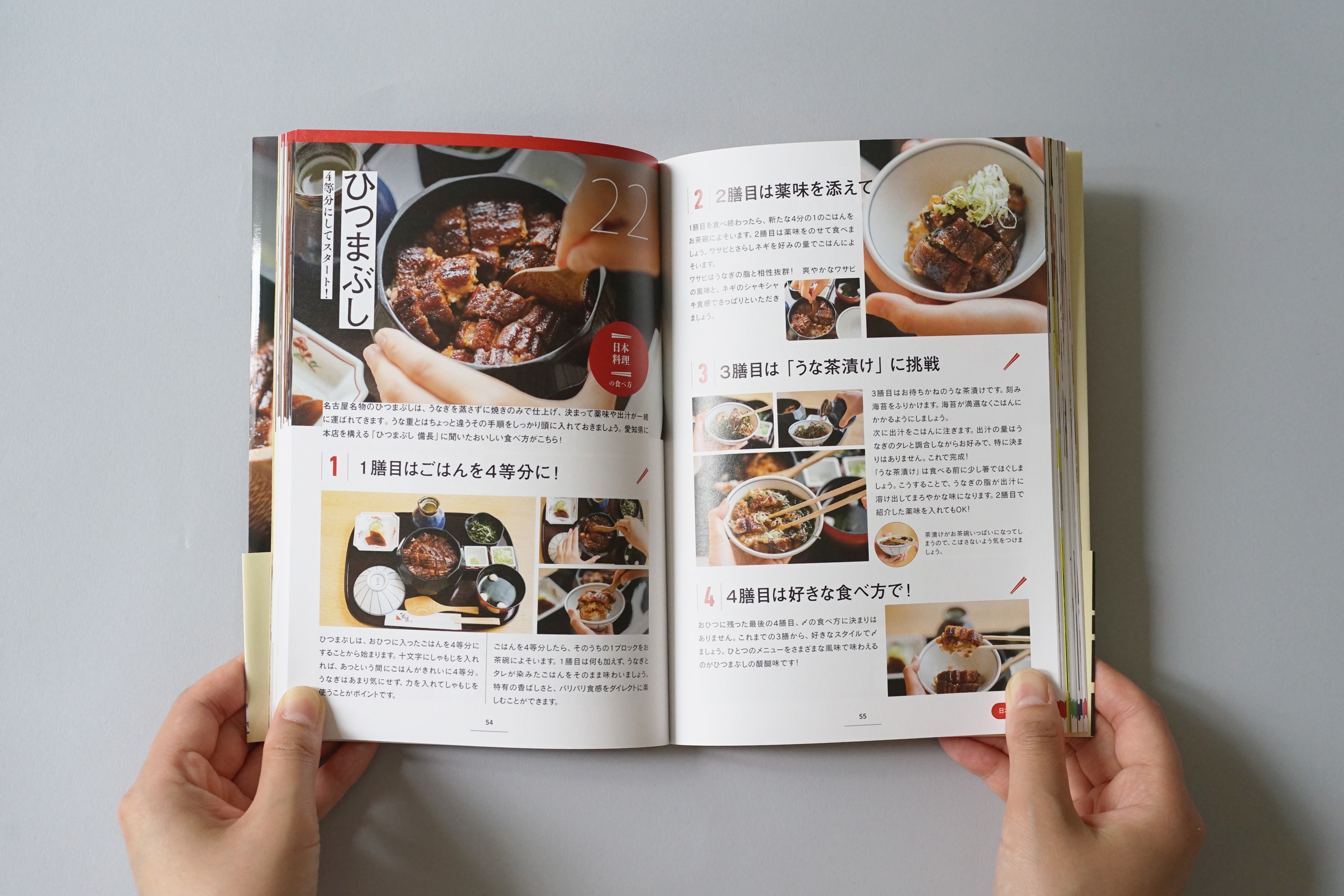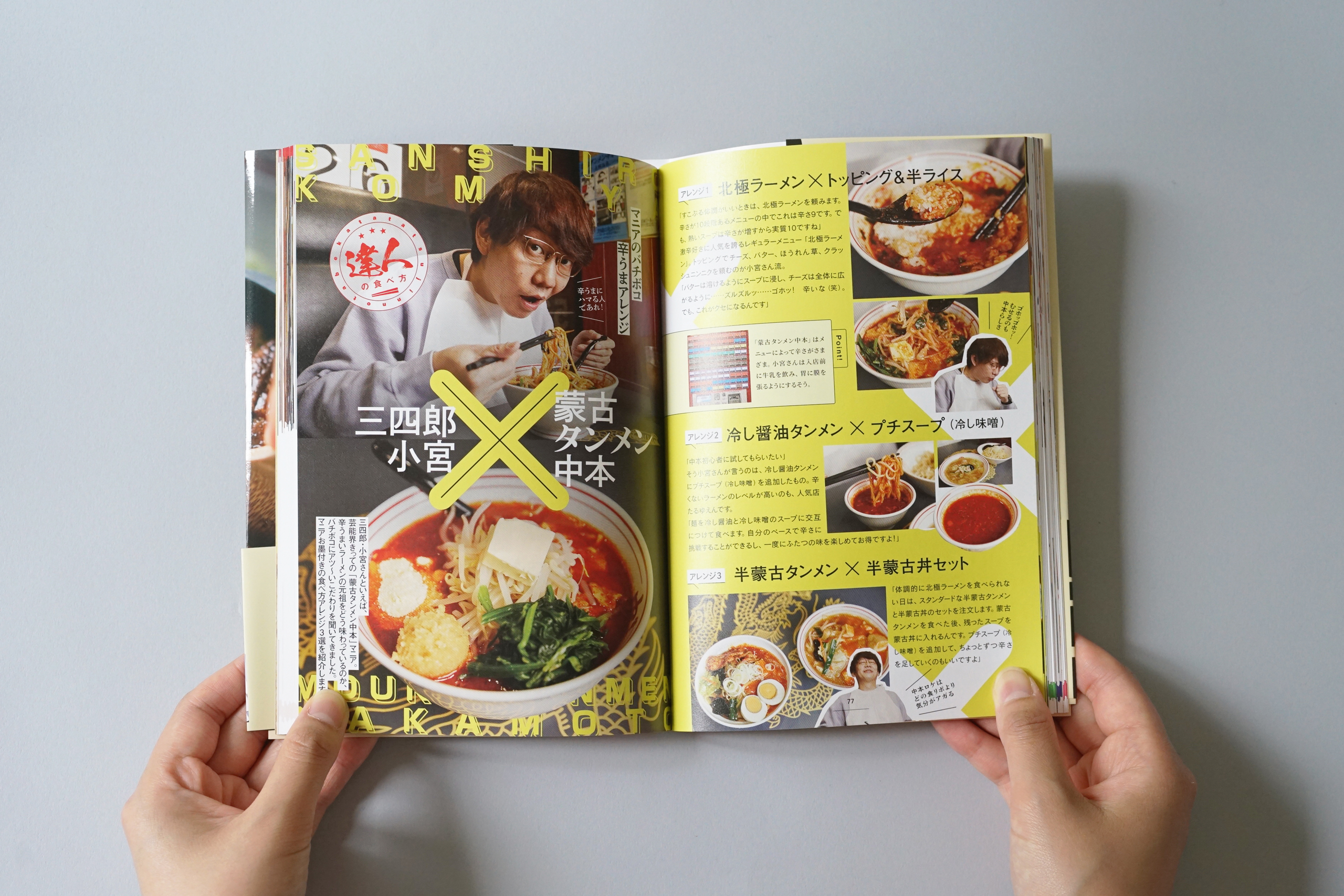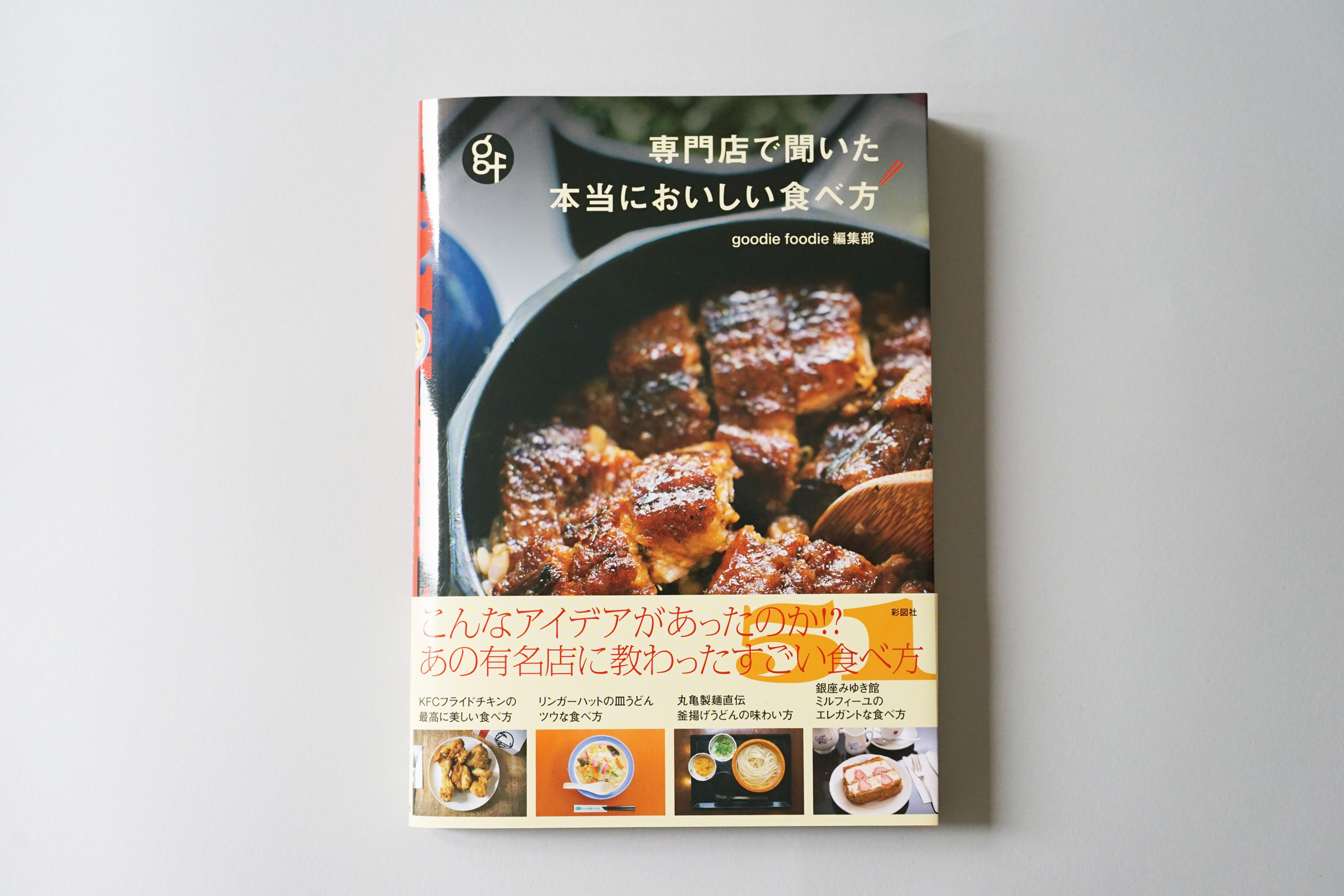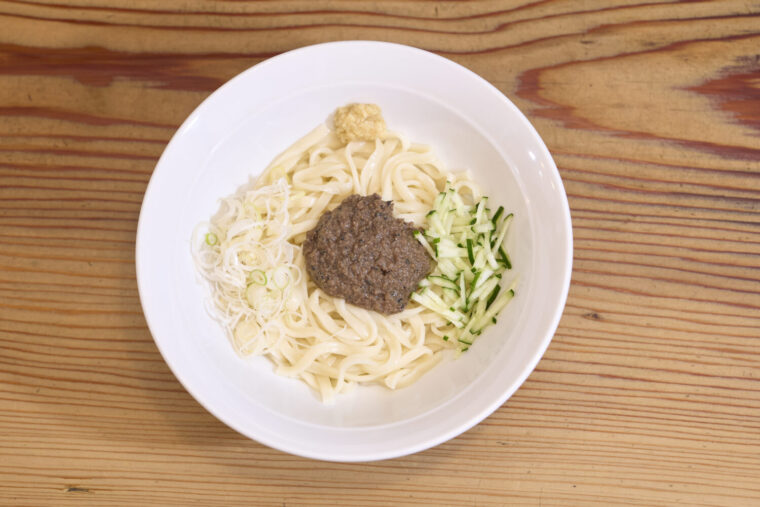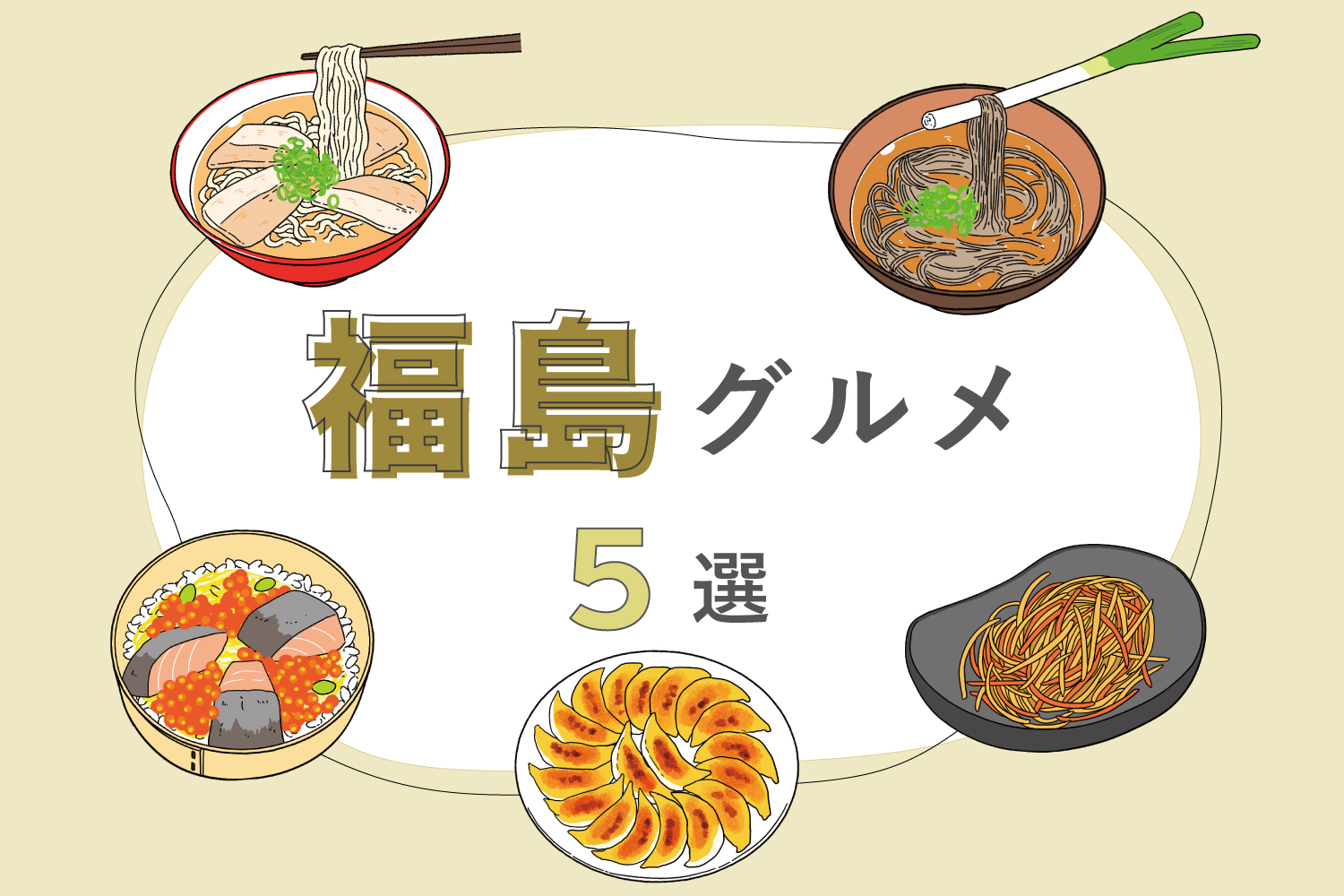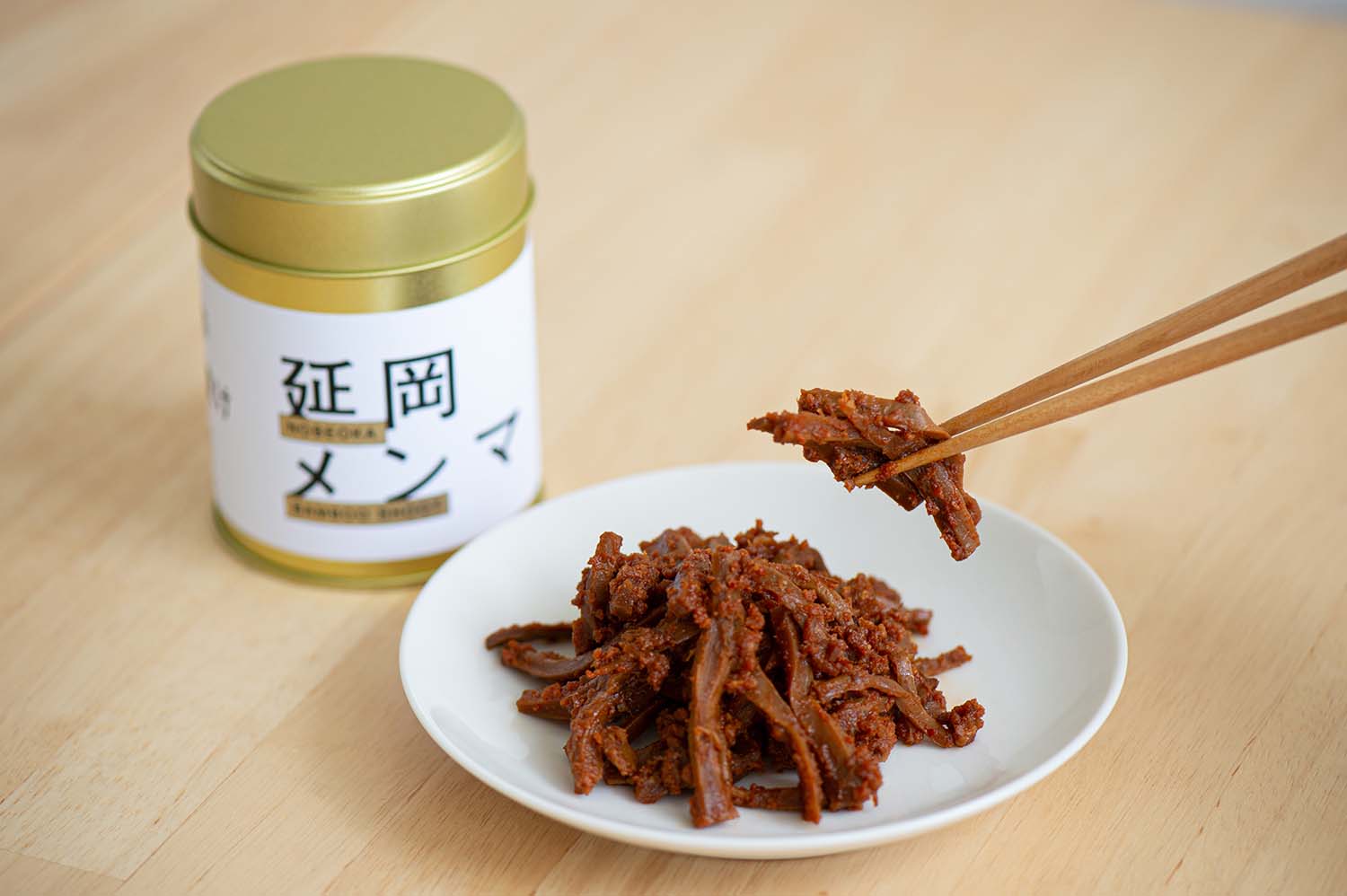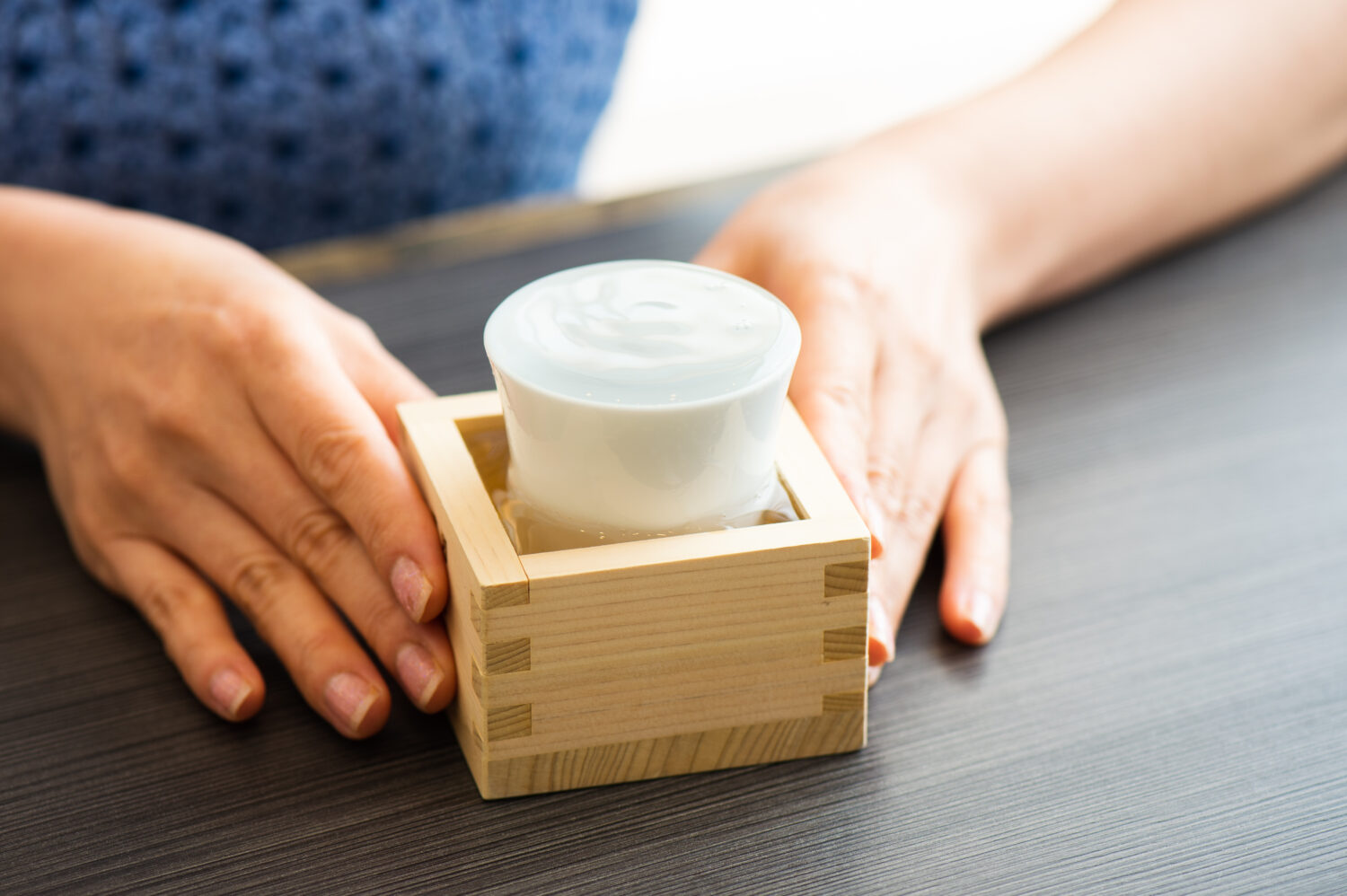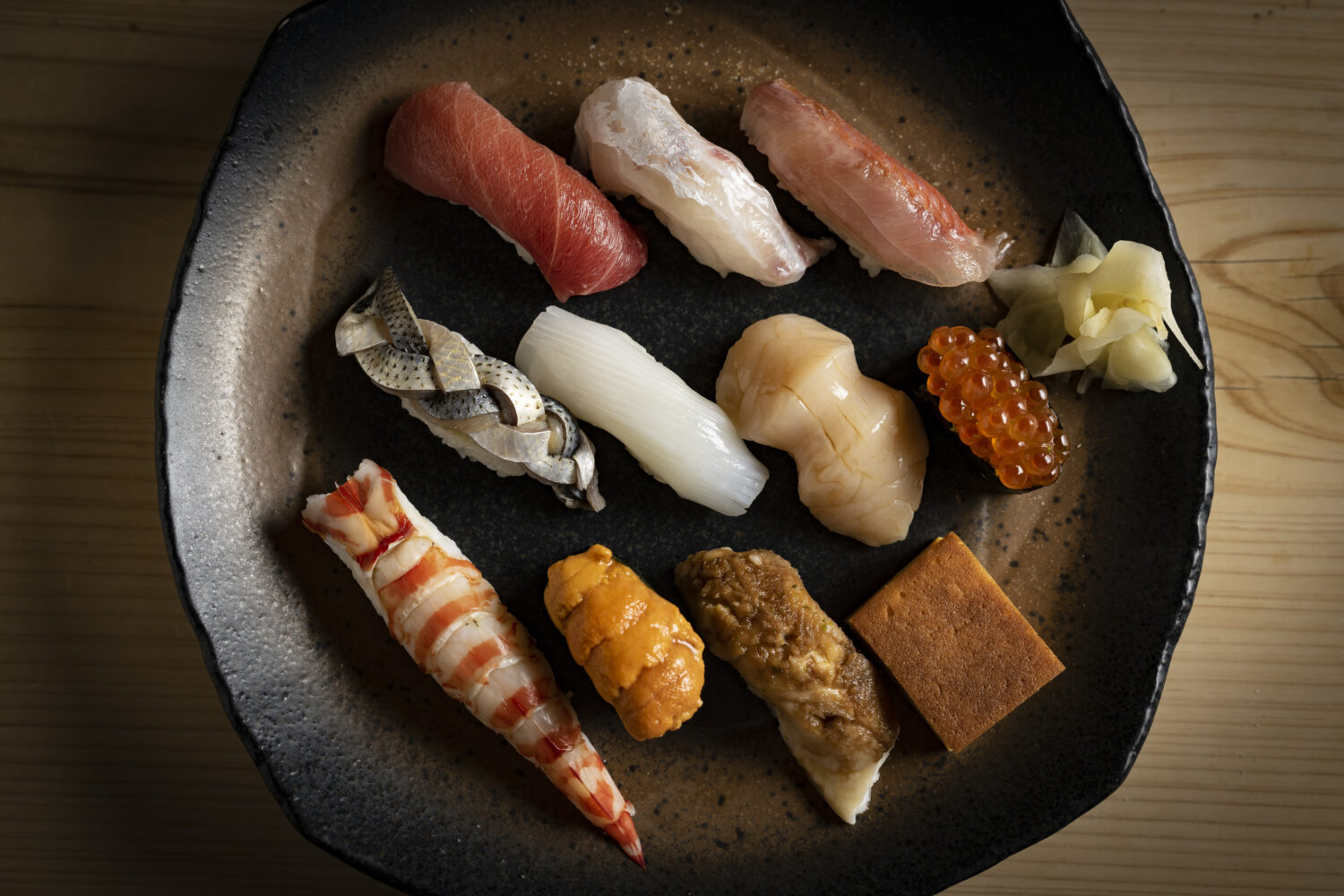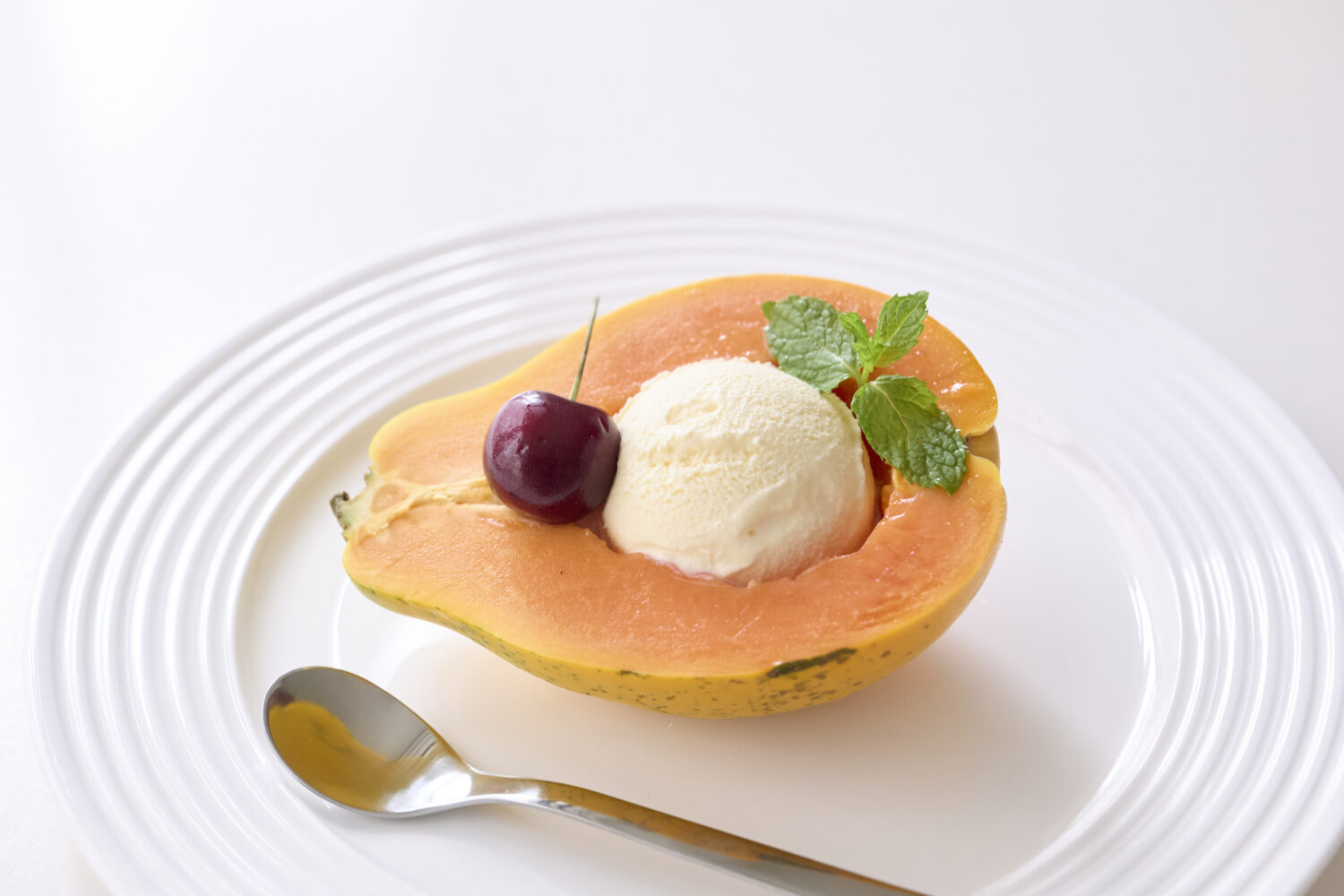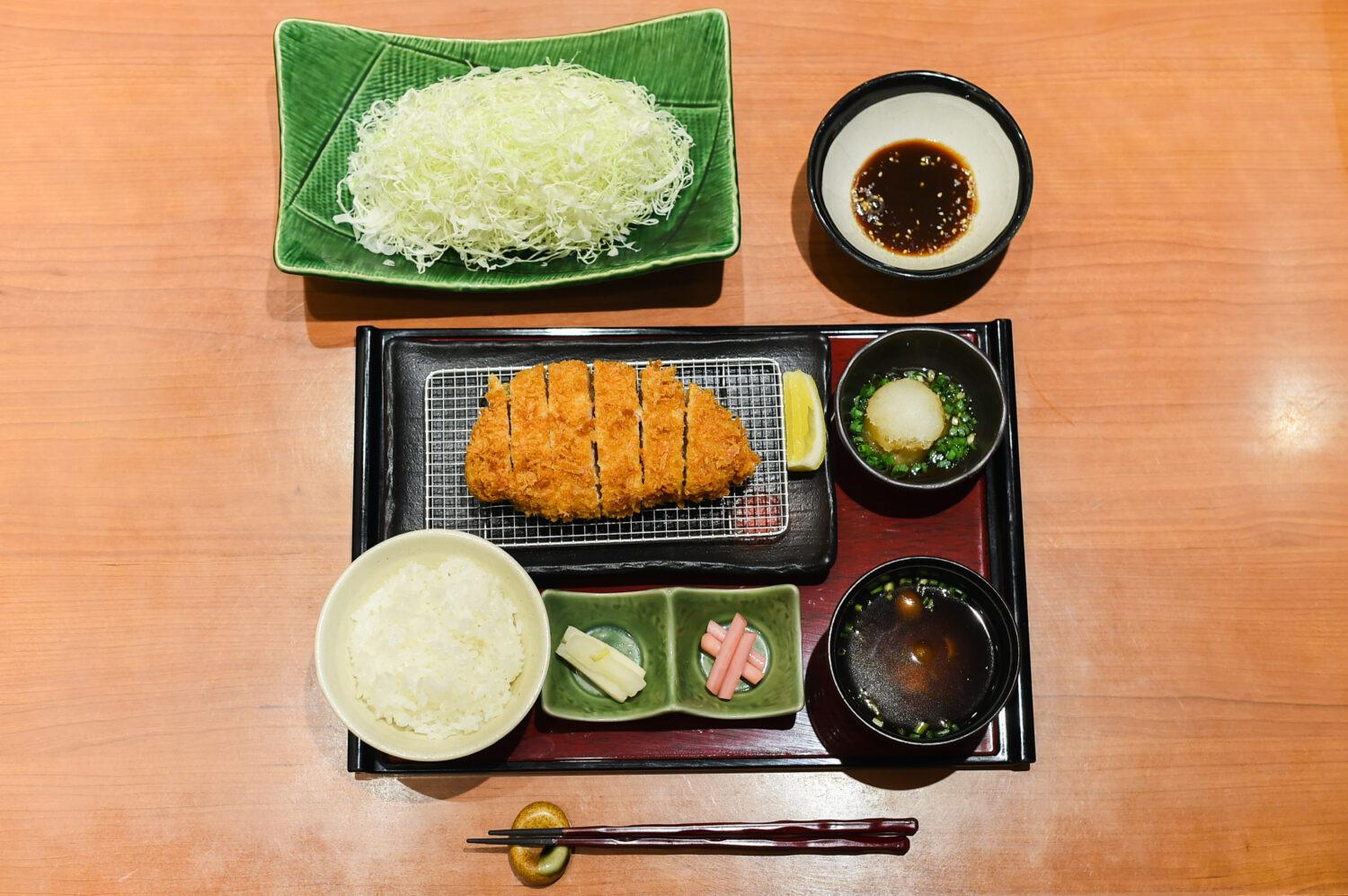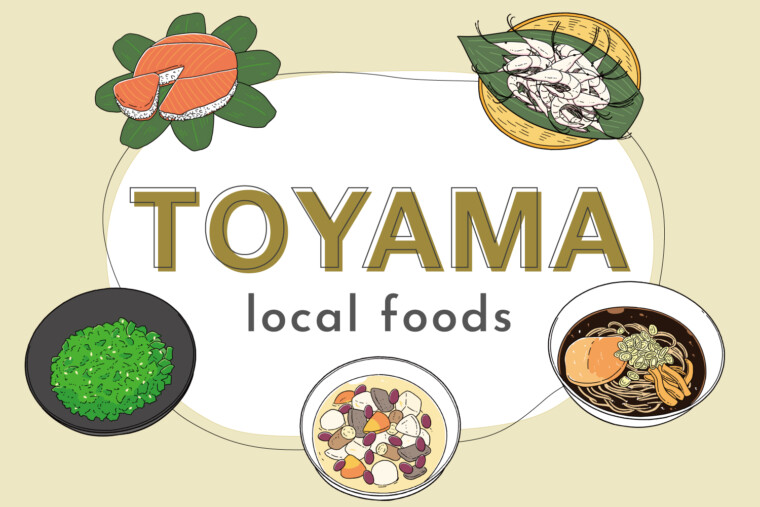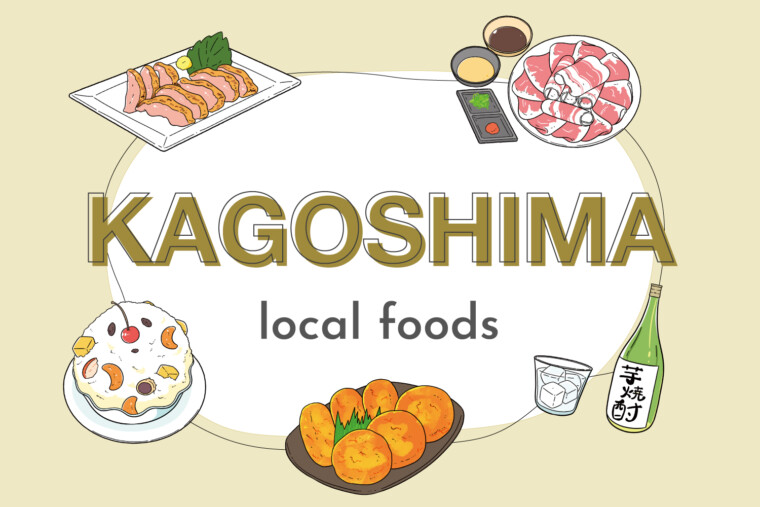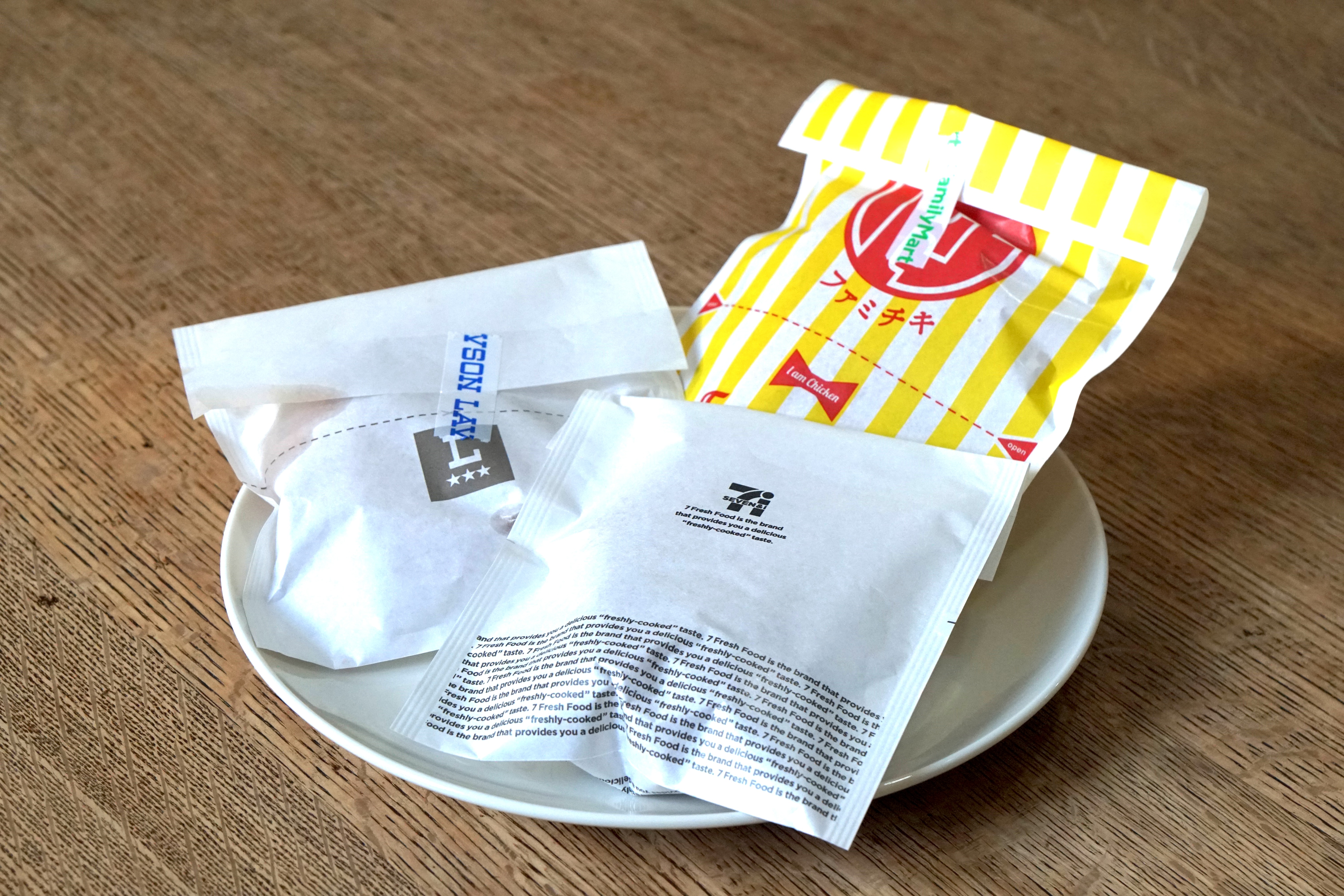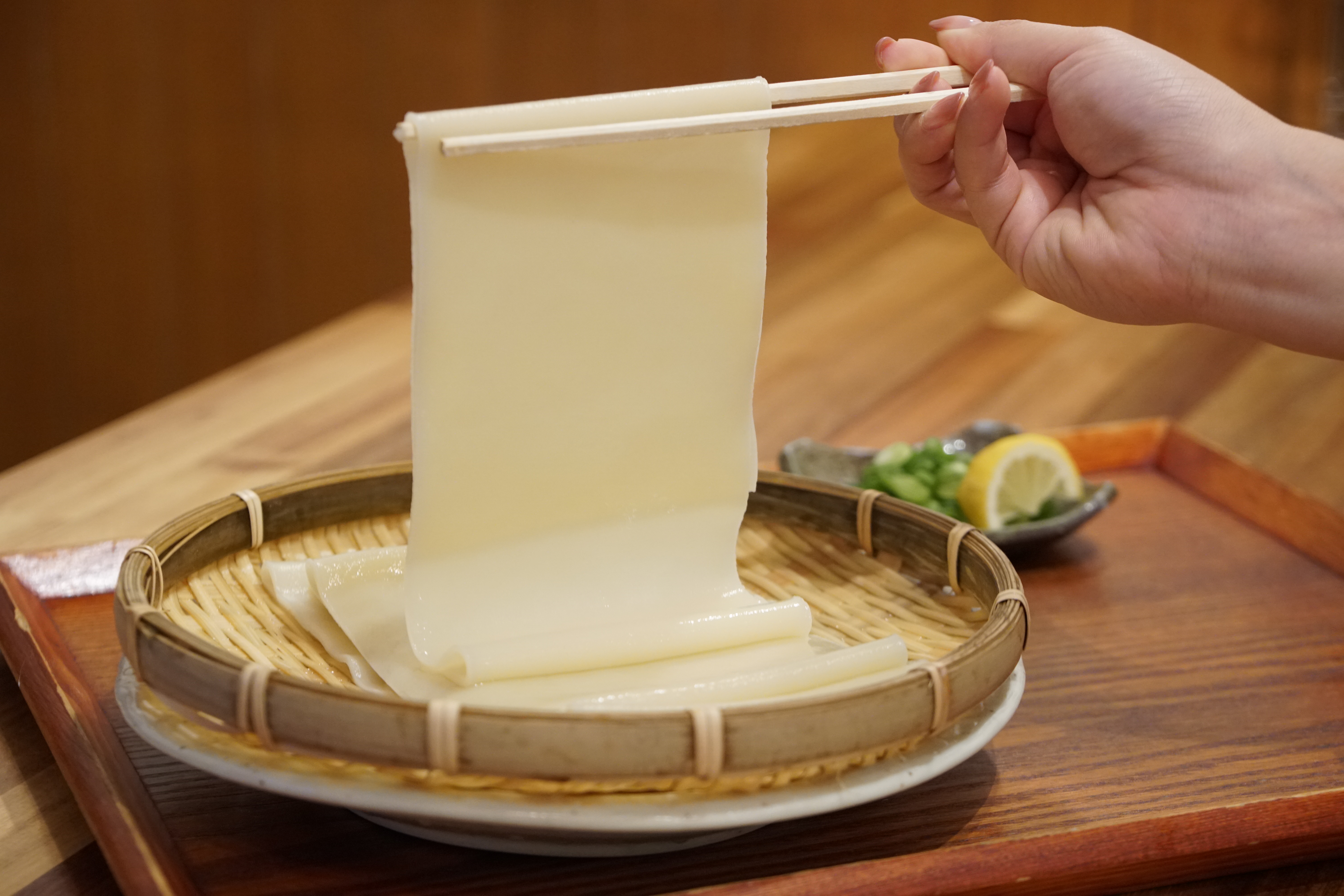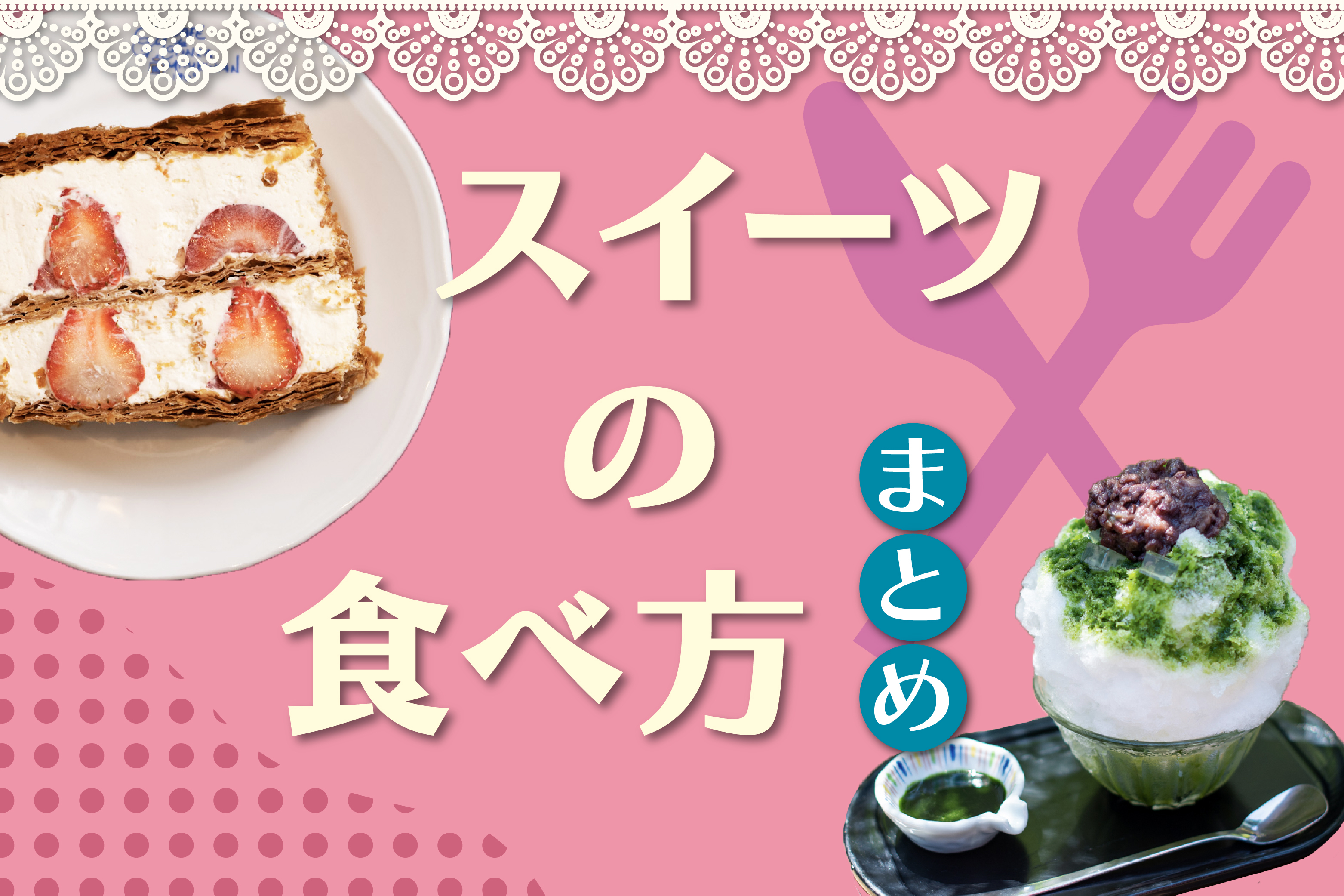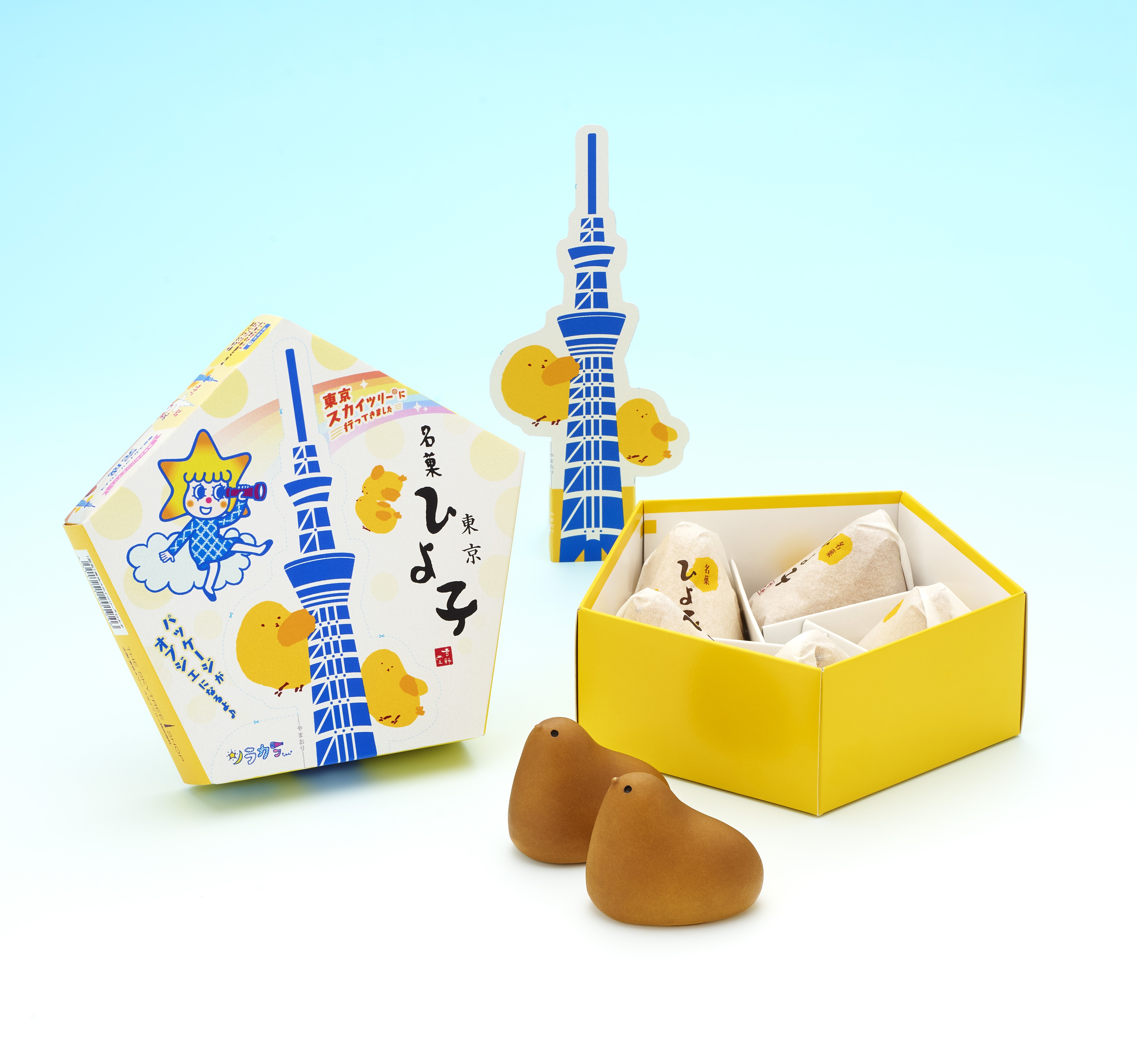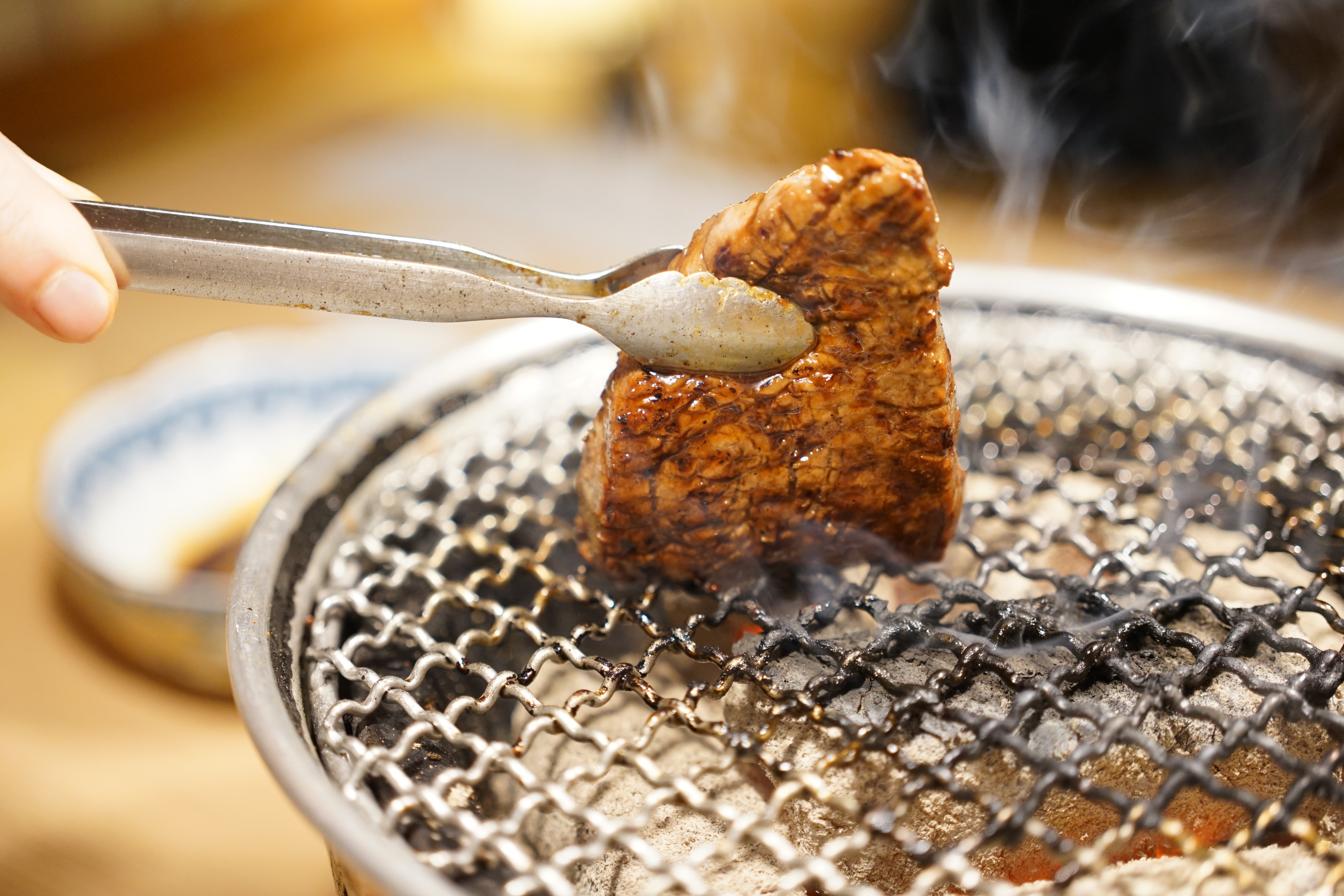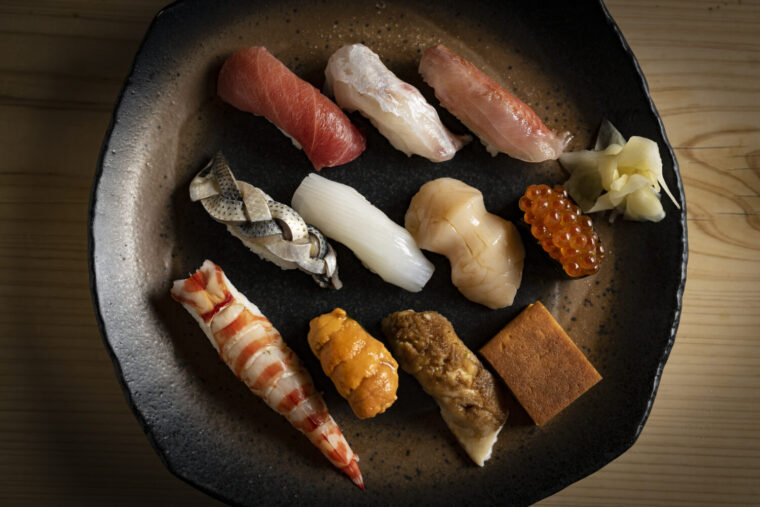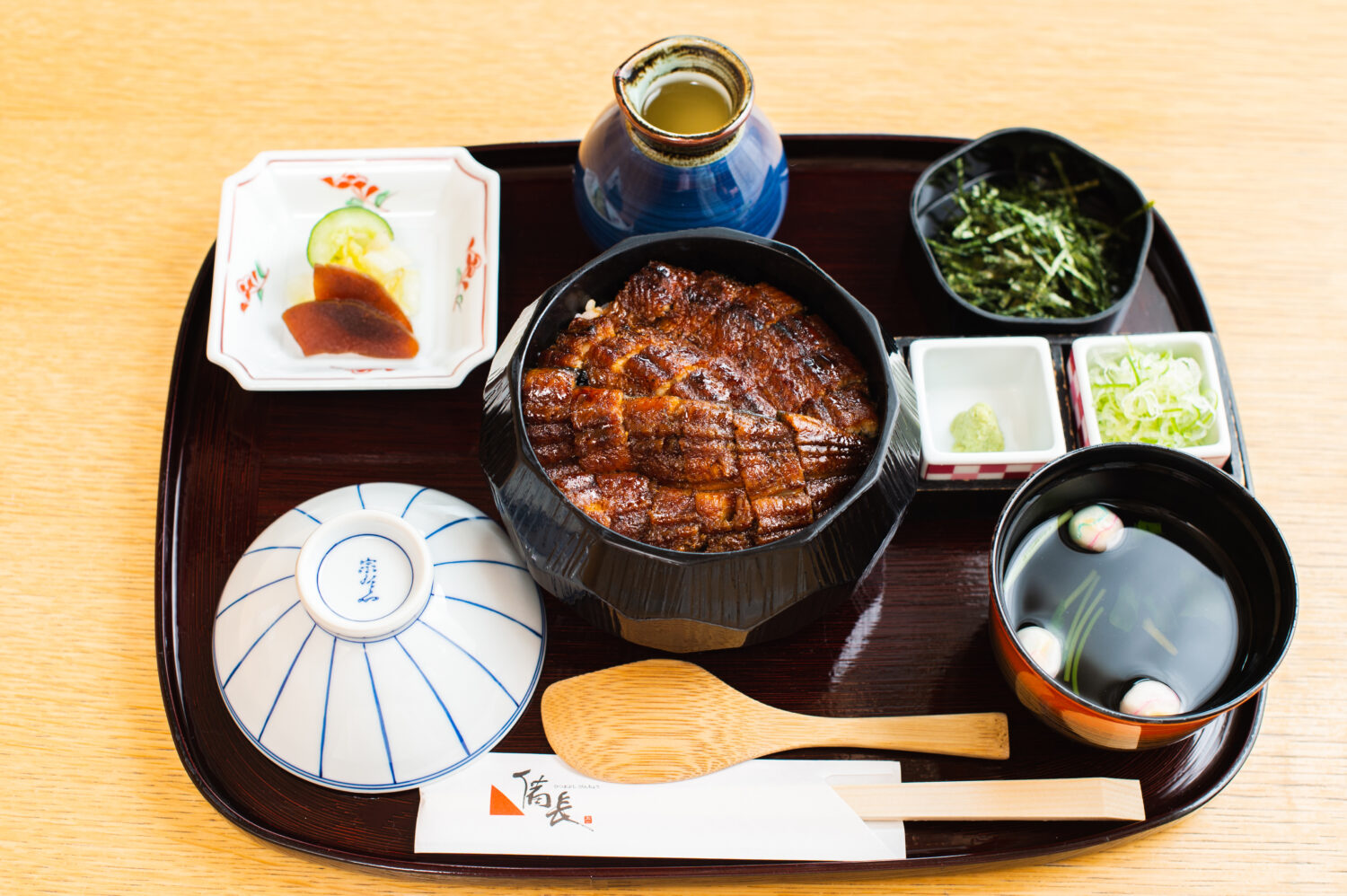
How to Eat Hitsumabushi Like a Local | A Step-by-Step Guide to Nagoya’s Famous Eel Dish
Hitsumabushi – eel grilled with a sweet-and-savory sauce, then chopped and served atop steamed rice – is a local dish of Nagoya, Aichi prefecture. Classic accompaniments include aromatic condiments and dashi broth. While the dish resembles unajuu (grilled eel atop steamed rice in a juubako serving box), the style of enjoying hitsumabushi is a little different, and has become a tradition at specialty restaurants.
share:
Table of Contents
First, divide the rice into four equal portions!
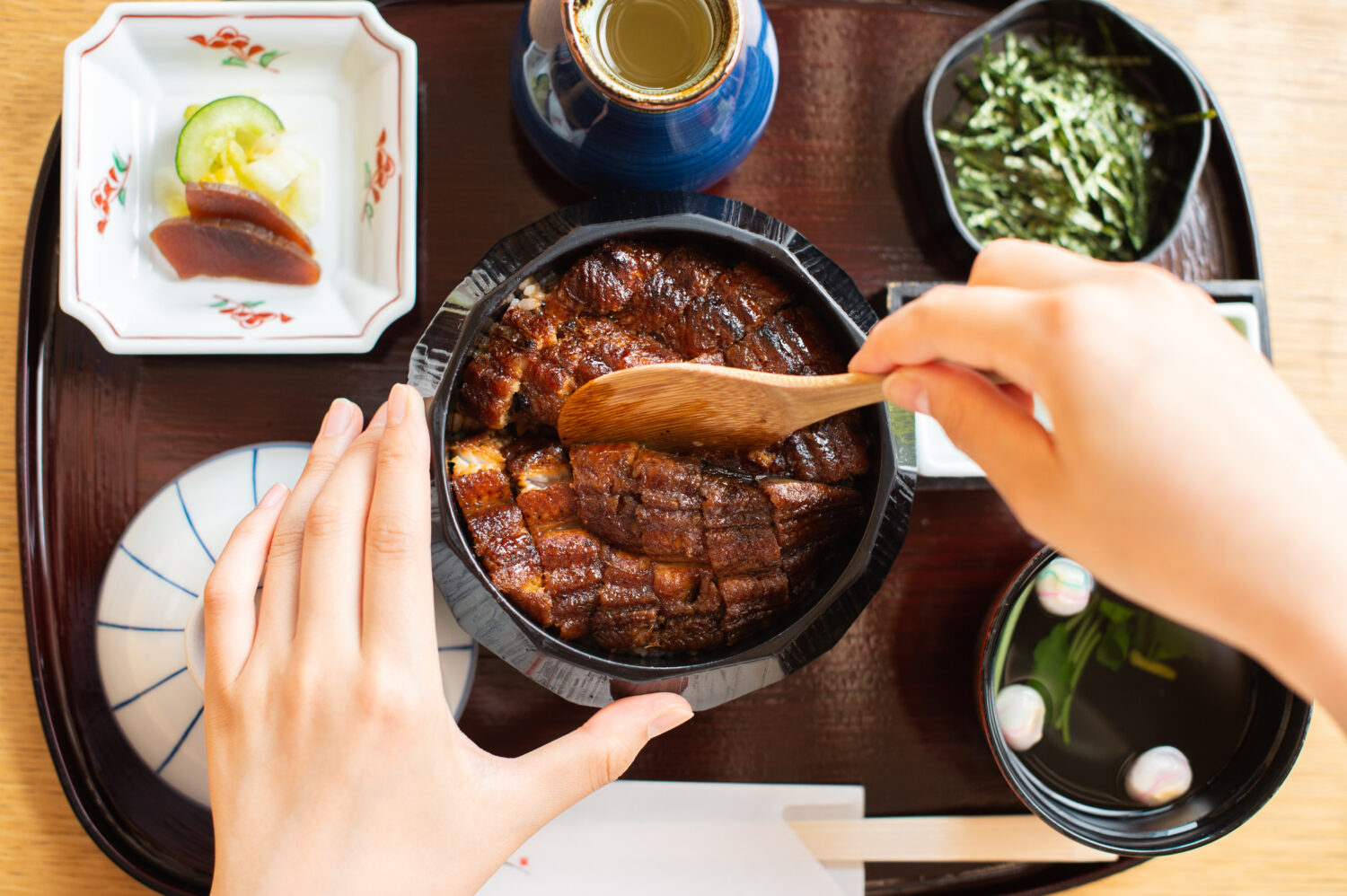
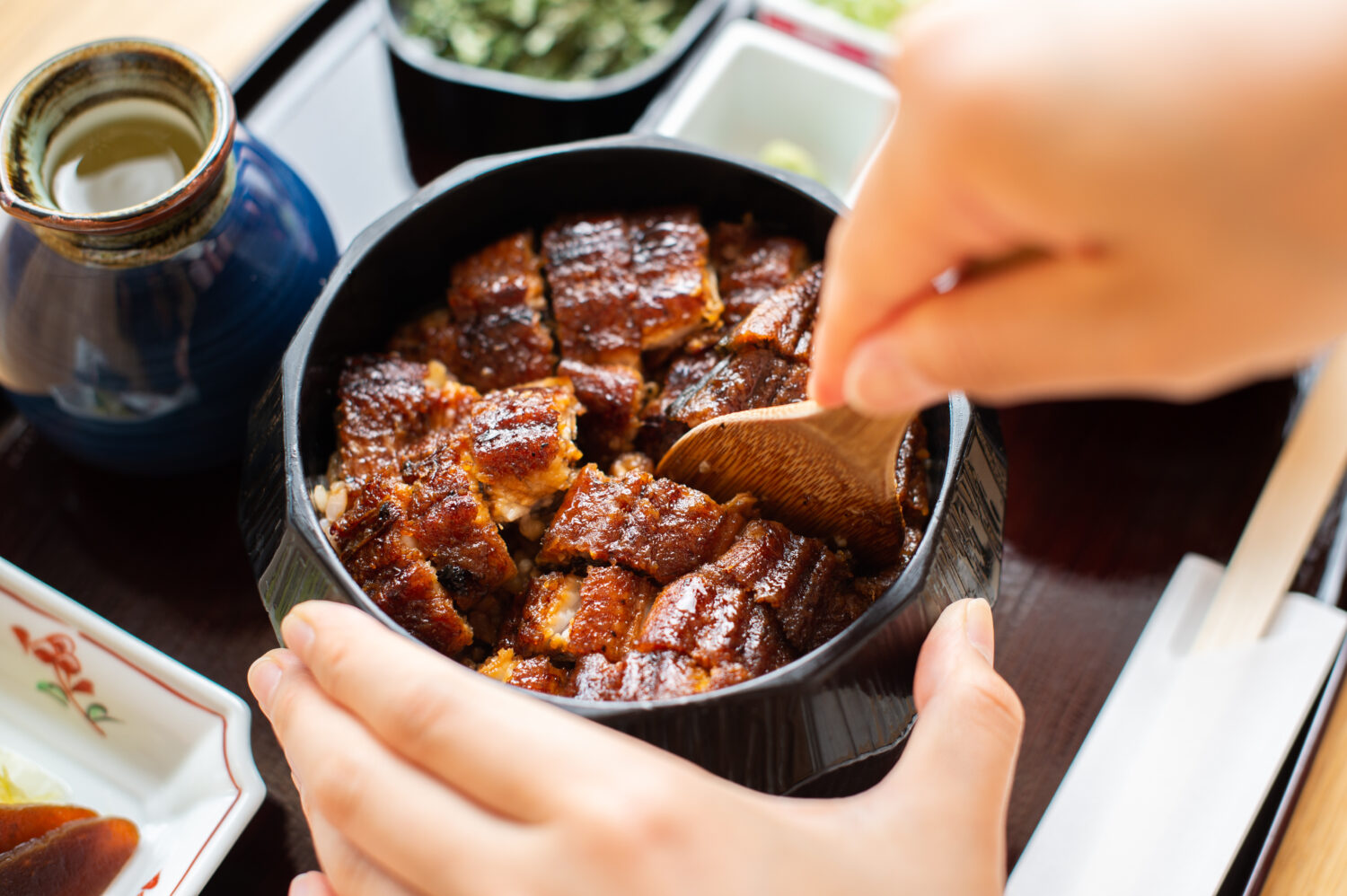
Enjoying hitsumabushi begins at the hitsu, a large bowl for keeping rice warm. Start by dividing the rice into four equal portions, using the shamoji (rice scoop) which is included with each platter. First, cut a straight horizontal line down the middle of the rice. Now that the rice is in two equal portions, cut it in half again vertically. Visualizing the cross shape as you cut will help to get four neat, even portions in no time at all.
Enjoy the first bowl just as it comes
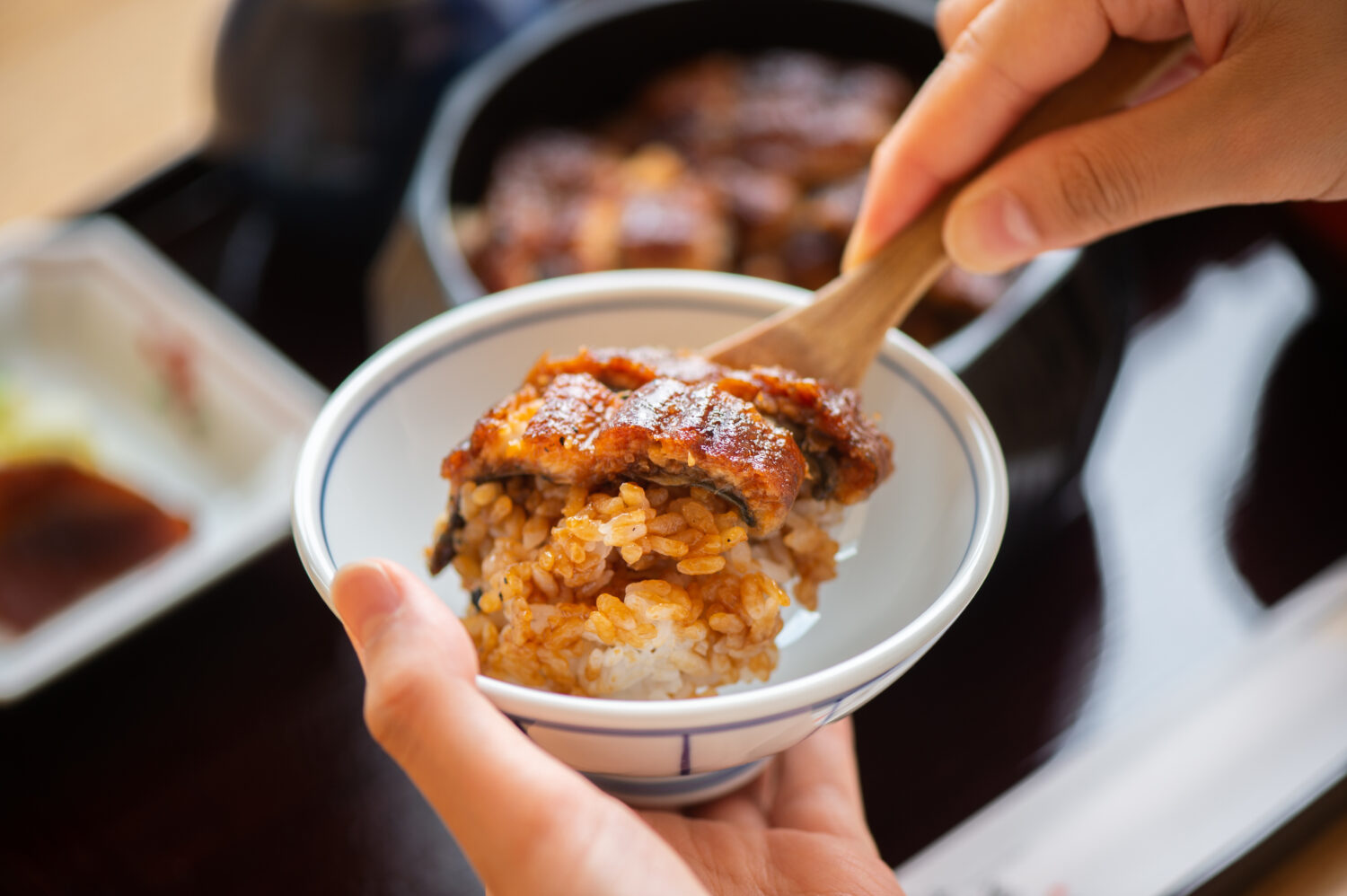
Now that you have the rice in four portions, serve one of the blocks into your chawan (rice bowl). First, enjoy the grilled eel and sauce-soaked rice just as it comes. This is the best way to directly appreciate the smoky aroma and crisp texture of the grilled eel.
Garnish the second bowl with aromatic condiments
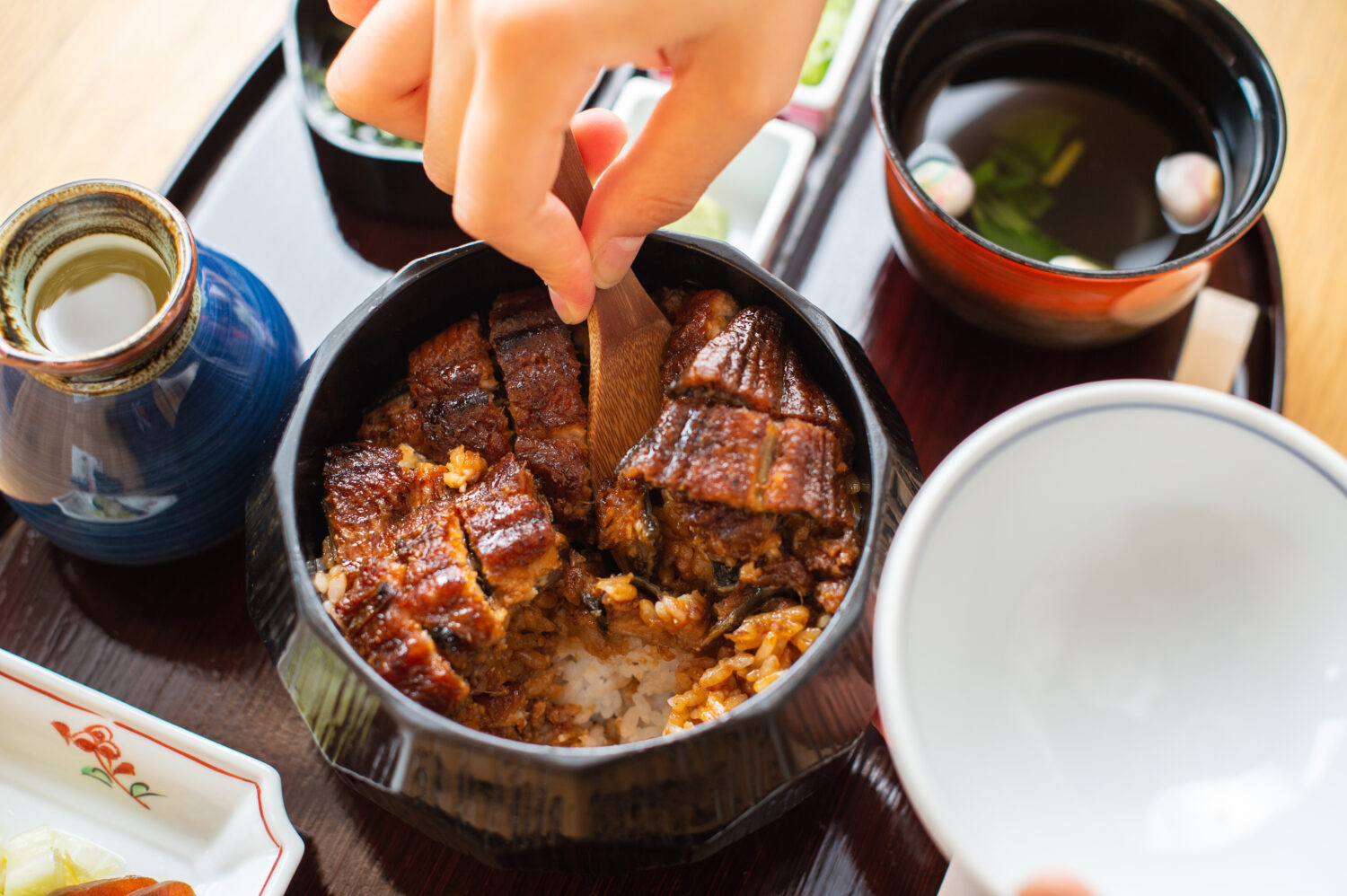
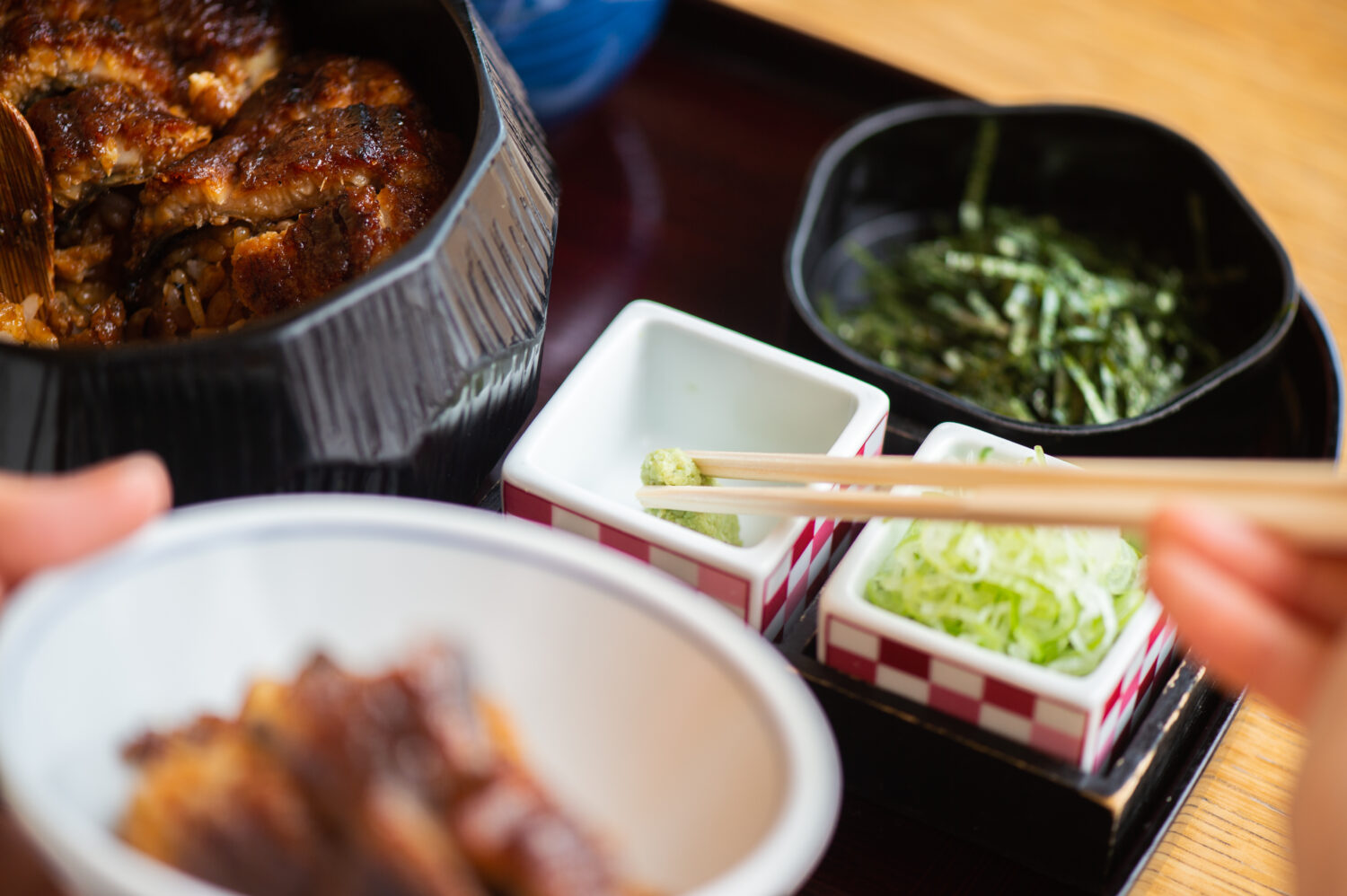
After finishing the first bowl, move on to the second. Serve another quarter of the rice into your bowl, and garnish your second helping with aromatic condiments, adding your preferred amounts of the included wasabi and sarashi-negi (finely sliced green onion).
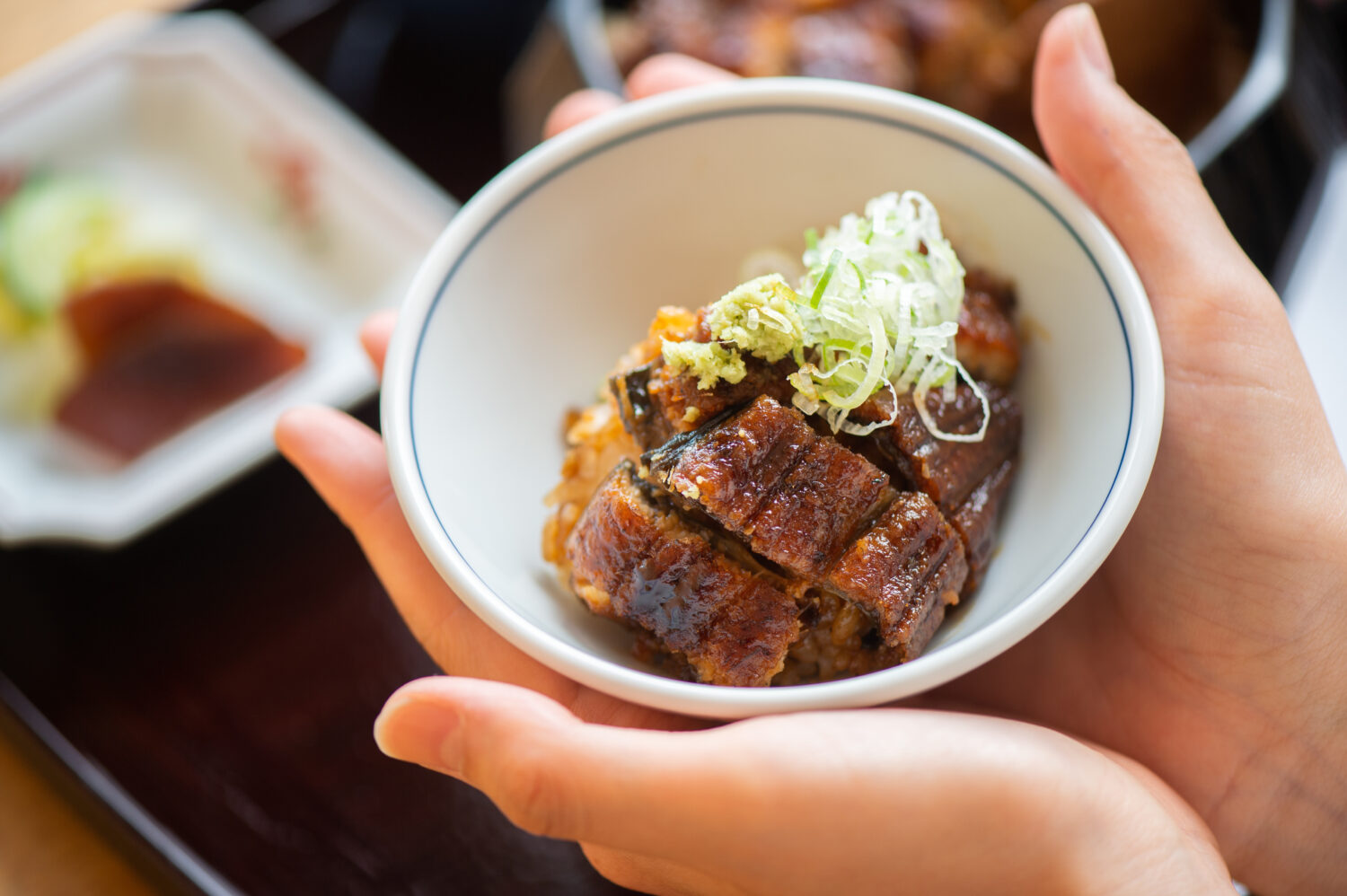
You may be surprised at how perfectly wasabi compliments the fatty richness of eel! The refreshing zing of wasabi and the crunchy texture of green onions give the second bowl a lighter feel.
Top the third bowl with dashi broth to make una-chazuke
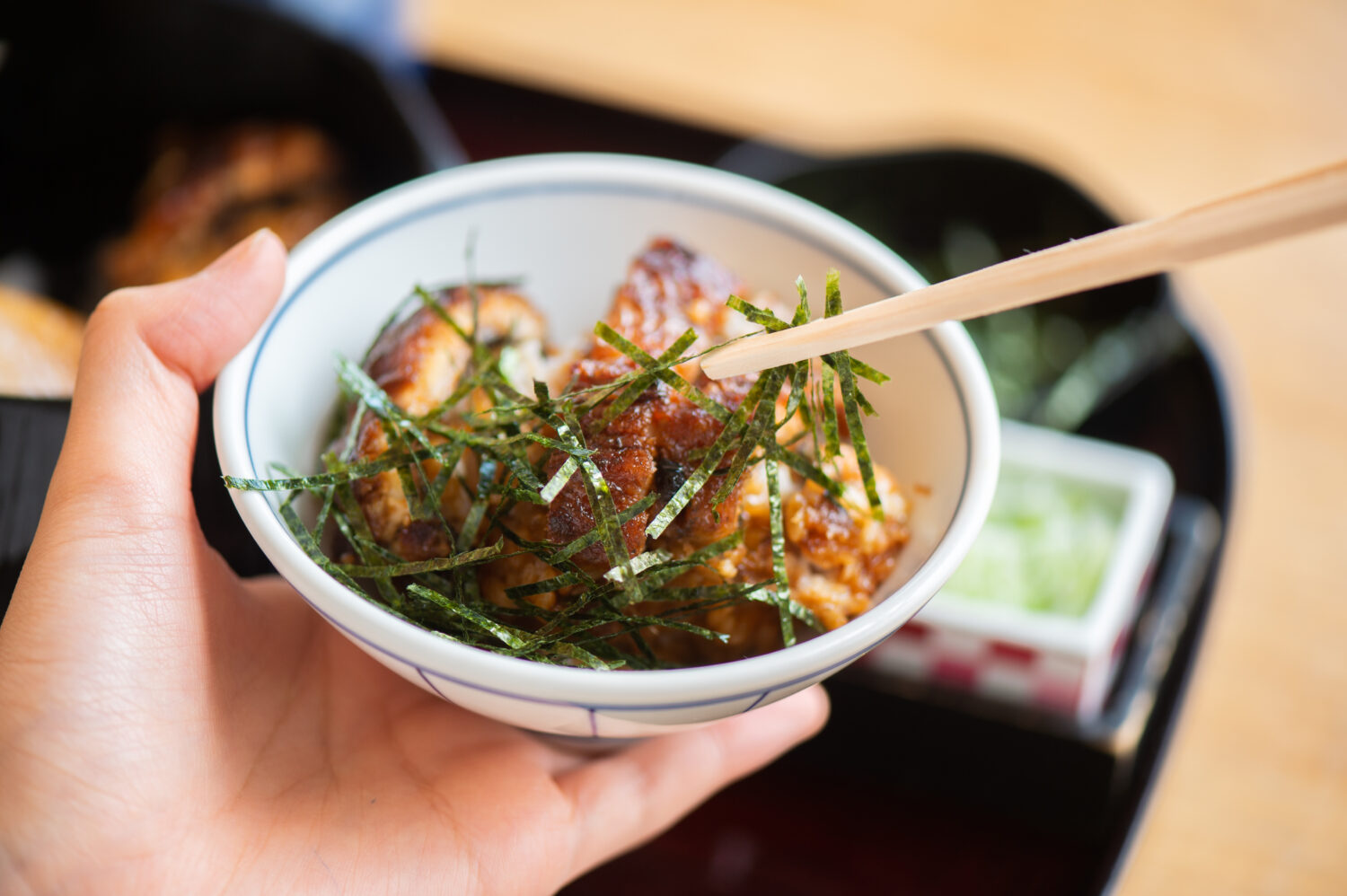
For the third bowl, first, top with kizami-nori (thin strips of laver). Scatter the laver to cover all of the rice.
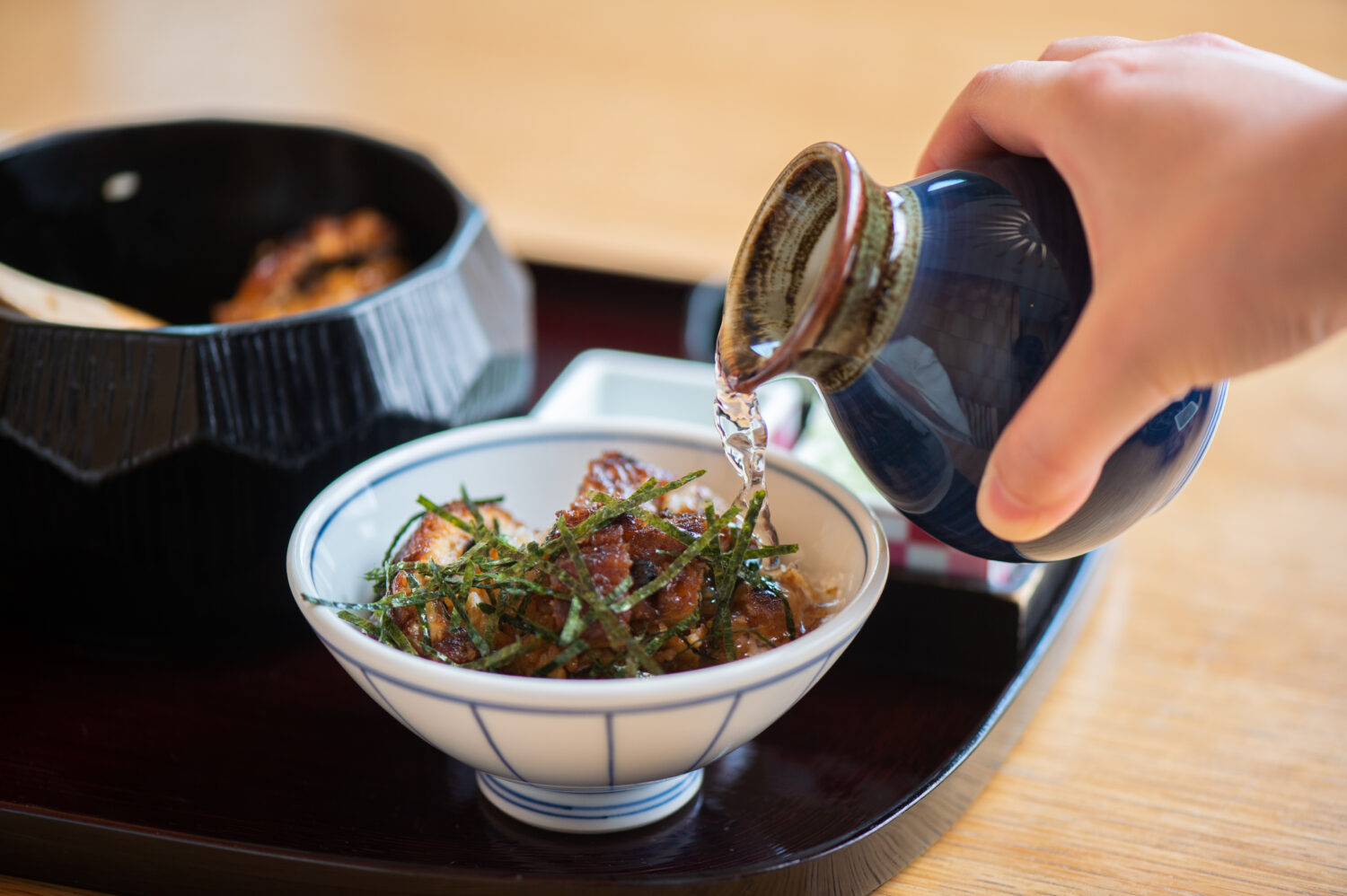
Next, top the rice with dashi broth. Use as much as you prefer to complement the eel sauce – there is no particular rule about how much! You’ve just completed the classic combination of una-chazuke: unagi (eel) and chazuke (cooked rice in hot broth).

Before eating, first use your chopsticks to break up the una-chazuke a little. This will release some of the eel fat into the broth, giving a mellow flavor. Garnish with some more of the aromatic condiments used on the second bowl to create a true masterpiece!

After breaking up the eel, all that’s left to do is enjoy. Be mindful not to spill, as the bowl will be fuller than before. Savor this third variation of hitsumabushi, which offers flavors and textures not yet experienced in the first two bowls.
For the fourth bowl, finish any way you like!

The fourth and final serving awaits. This time, there are no particular rules. Of the methods you’ve tried, feel free to use whichever you have enjoyed most!
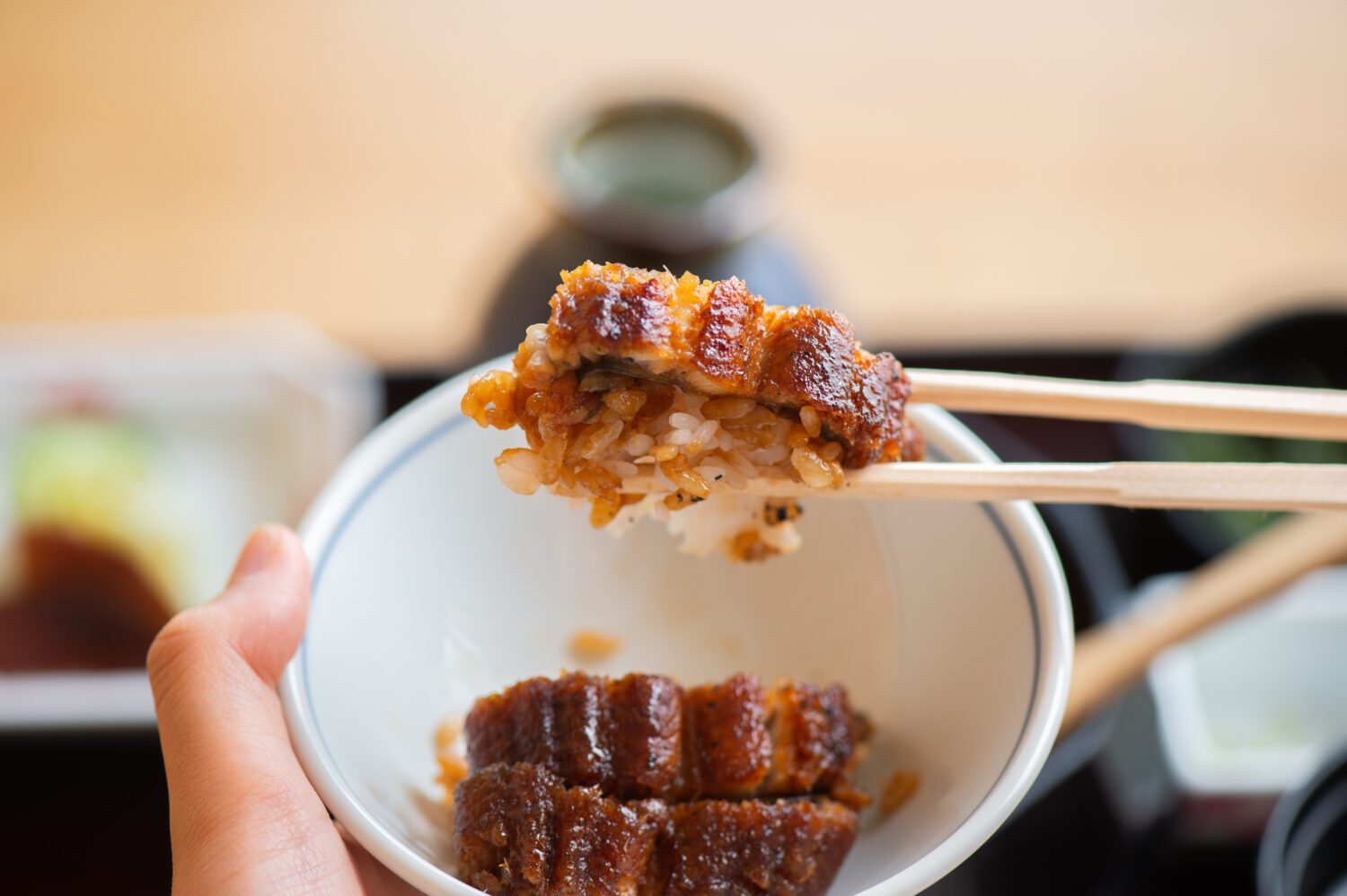
Hitsumabushi is said to be one dish with three flavors. We hope this article is helpful in mastering the basics, and wish you delicious experiences as you discover which style you enjoy most.
Specializing in Nagoya’s renowned local dish of hitsumabushi, there are now twelve locations of Hitsumabushi Bincho throughout the Nagoya, Tokyo, and Kansai areas. Cooking in jiyaki (grilled without steaming) style, which is rarely seen in Kanto, provides crispy skin and moist, tender meat… a true delight. The Hitsumabushi Nagoya Bincho Marunouchi Building Restaurant in Tokyo kindly cooperated with photography for this article.
*The information is based on the time of reporting or creation, and may differ from the current situation.
tags:
share:










